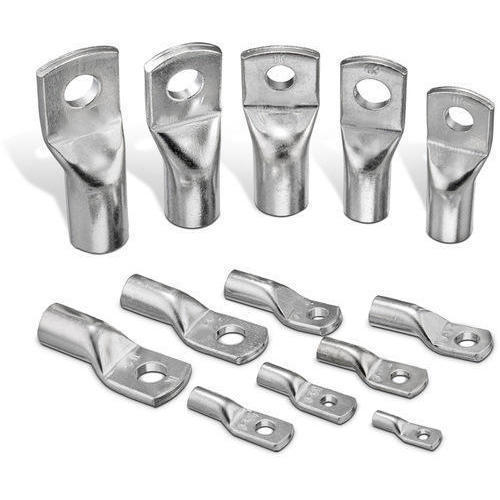Features:-
- Cable lugs are devices used for connecting cables to electrical appliances, other cables, surfaces, or mechanisms. The clamps that connect wires to an automotive battery are a common example of a cable lug, as are the ends of battery jumper cables. Designed to be easily installed and removed for repairs or maintenance, cable lugs area generally used when permanent, direct-fastening methods are not feasible or necessary.
- The words "cable" and "wire" are sometimes mistakenly interchanged. Cables are made from multiple wire strands, while wires consist of a single strand. Both cables and wires may be used with cable lugs of a suitable type.
- One end of a cable lug is typically used for connecting a cable, which could be soldered, welded, or crimped depending on the type. The connection end of the lug is then fastened to a matching terminal or connection point by means of a bolt, screw, or spring clip. Numerous sizes, configurations, and material types typically are available to suit particular applications, but metal is the predominate material used. A cable lug is sometimes called a "cable connector" or "cable anchor," depending on industry jargon and application.
- The connector end of a cable lug is typically chosen for its compatibility to the terminal type or anchoring method. Fork or U-shaped lugs are used for screw terminals; closed-ring or O-type lugs are used for bolt-on applications; and pin or spade lugs are used for press-on pin or blade terminals. A cable lug also serves as a cable-size reducer, thereby allowing thick cables to be attached to a connector with a smaller diameter.

